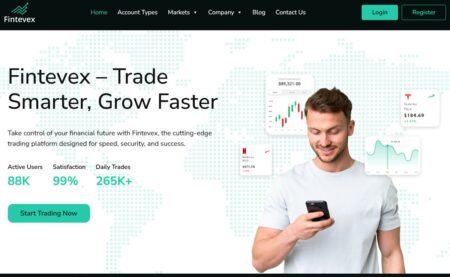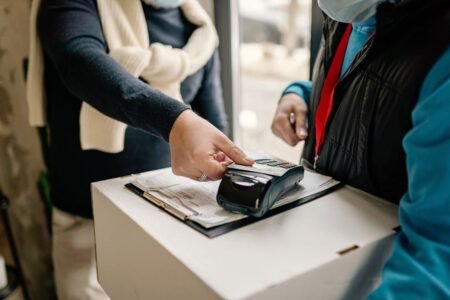The European Commission and the European Investment Fund (EIF) launched on 10 April a Pan-European Venture Capital Funds-of-Funds programme (VentureEU) to boost investment in innovative start-up and scale-up companies across Europe.
Advertisement
What is the issue with venture capital in the EU?
Europe boasts a wealth of talent, world-class researchers and skilled entrepreneurs but many new firms do not make it beyond the critical first few years because they cannot get the finance to scale up into global businesses. The Juncker Commission wants to give Europe’s many innovative start-ups every opportunity to become world-leading companies while remaining in the EU.
Comparing the innovation ecosystems of the EU and the US, there is a striking difference in the amount of venture capital (VC) available. In 2016, venture capitalists invested about 6.5 billion in the EU compared to 39.4 billion in the US. The lack of VC at sufficient scale does not enable funds to keep pace with the investment needs of firms as they scale up.
Europe has fewer high-growth companies “unicorns” (start-ups that have reached a market valuation of over $1 billion) than the US and China. In 2017 Europe had 26, compared to 109 in the US and 59 in China.
Europe’s venture capital funds are not big enough to attract major institutional and private investors nor to finance companies as they grow: venture capital funds in Europe have an average size of around 56 million whereas in the US they are on average three times bigger. In addition, 90% of the EU’s supply of VC is concentrated in just eight Member States, and there is little cross-border investment: this fragmentation hinders larger funds from emerging.
Another problem is the source of VC funding: compared to the US, EU venture capital receives far more public funding and much less private investment. We want to increase investment opportunities for institutional private investors from both inside and outside the EU in Europe’s VC market.
What is “VentureEU”?
The Commission says it is addressing the above problems head-on by setting up pan-European venture capital funds-of-funds: VentureEU. The primary purpose is to use public money in a smarter way to attract substantial amounts of private investment from investors who are not currently investing in European VC because there is no appropriate vehicle. Funds-of-funds, acting as intermediaries, can bridge the gap between large institutional investors and smaller venture capital funds. In this way, they can provide access to larger pools of international capital and so enable more European SMEs and start-ups to be financed as they grow and get support for longer periods of time.
How will it work?
Thanks to cornerstone investments totalling 410 million from the EU that crowd in private investors, the six VentureEU funds will raise up to 2.1 billion of public and private investment. These six VentureEU funds will invest around 25% of the target size of smaller VC funds, which will in turn raise additional capital from other investors, resulting in an estimated 6.5 billion of new investment in innovative start-ups and scale-ups across Europe and beyond.
The six funds will cover projects in at least four European countries each. The smaller investee funds will help finance SMEs and mid-caps from a range of sectors, such as digital, life sciences, medical technologies, and resource and energy efficiency. Around 1,500 start-ups and scale-ups are expected to gain access to this new source of financing across the whole EU.
I have a promising start-up and need financing to expand: How do I benefit from VentureEU?
If you are an innovative start-up looking for equity investments under VentureEU, you can contact the selected funds that have signed a contractual agreement with the European Investment Fund (EIF) which is the delegated entity implementing VentureEU on the EU’s behalf. On 10 April 2018, this implies concretely that you get in touch with the managers of Isomer Capital or Axon Partners Group in order to understand the selection process that will be applied to make the concrete investment decisions at individual fund level. Companies may have the opportunity to contact on top of these two funds also the four other selected funds i.e. Aberdeen Standard Investments, LGT, Lombard Odier Asset Management and Schroder Adveq later on this year, when the EIF reaches legal agreement with them.
Where does the EU money come from?
The EU will provide cornerstone investments of up to 410 million including 67 million of EIF own resources: 200 million from the Horizon 2020 InnovFin Equity, 105 million from COSME (Europe’s programme for small and medium-sized enterprises), and 105 million from the European Fund for Strategic Investments (EFSI) the so-called Juncker Plan. The rest of the financing will be raised by the selected fund managers primarily from independent investors.
Who are the six funds? How were they chosen?
The six VentureEU funds are Aberdeen Standard Investments, Axon Partners Group, Isomer Capital, LGT, Lombard Odier Asset Management and Schroder Adveq.
During the selection process, Commission staff, assisted by independent experts, scored applications received by the European Investment Fund (EIF) against ‘policy fit’ criteria set out in the call for expression of interest. Applications rated above pre-defined thresholds were taken forward. Next, the EIF assessed and scored the funds’ proposals against criteria, covering ‘expected performance’. Applications were ranked by combining these two scores, and the EIF allocated the available funding among the selected proposals in order of merit.
Why is this not just an EU fund? Why bring in private fund managers?
We want to make good use of public funds. The EU involvement will make investment in VentureEU and its underlying funds more attractive for independent private and institutional investors. At least 50% of the financing will come from independent private investors. VentureEU will be managed by six professional and experienced fund managers under the supervision of the Commission and the EIF ensuring a real market approach. This will attract more investments and significantly increase the availability of VC funding for start-ups and scale-ups in the EU.
Why do we need to spend public money on this? Can’t the private sector mobilise money on its own?
It has not been doing so. Since 2008, private-sector investors have slashed their VC investments in both relative and absolute terms. Government agencies stepped in to cover the shortfall and ensure that European start-ups obtained at least minimal funding. As a result, the government share of investment in VC funds more than doubled from 2008 to 2014. However, investments by governments often come with conditions such as favouring their own local or national ventures to the detriment of cross-border activity and the growth of larger, cross-border funds. Also the lack of VC funds at sufficient size and scale does not enable funds to keep pace with the investment needs of firms as they scale up. Investing EU money in pan-European VC funds-of-funds is a confidence-building signal that aims to attract private money back into the European VC system. The model of using the EU budget to attract private investment works, as we have seen in the European Fund for Strategic Investments.
When will we see the first results?
The funds-of-funds will need some time to complete fundraising and start investing in VC funds. The first investments in investee funds are likely to take place within one to two years of EIF’s agreement with the funds-of-funds managers, which means that the initiative will start to yield results as of 2019.
What is the role of the European Investment Fund (EIF)?
In cooperation with the European Commission, the EIF ran the call for expression of interest to select managers for the pan-European VC funds-of-funds. During this process the EIF, jointly with the Commission, has selected, assessed and ranked investment proposals. The EIF has allocated the available funding among the proposals selected in order of merit, and is now finalising the contractual negotiation process and investing in qualifying funds-of-funds. The EIF will play the role of a Limited Partner (LP) in each fund-of-funds in which it invests with EU budget.
What else is the EU doing to improve access to financing for small businesses?
The Investment Plan for Europe aims to make better use of financial resources as well as providing advisory support and matching investors to projects. The core of the Investment Plan, the European Fund for Strategic Investments (EFSI), provides the European Investment Bank Group with a guarantee allowing it to invest in more and often riskier projects. Start-ups and SMEs are already seeing the fruits of the Investment Plan with nearly 600,000 start-ups and SMEs set to benefit from improved access to finance as of March 2018.
The EU has several other financing programmes aimed at supporting small businesses, such as Europe’s programme for small and medium-sized enterprises COSME, the EU’s research and innovation funding programme Horizon 2020, and the Employment and Social Innovation (EaSI) programme which focuses on financing microbusinesses specifically.
As part of the Capital Markets Union action plan, on 1 March 2018, new rules on venture capital investment (EuVECA) and social entrepreneurship funds (EuSEF) entered into application, making it easier for fund managers of all sizes to run these funds and allowing a greater range of companies to benefit from their investments. The new rules will also make the cross-border marketing of EuVECA and EuSEF funds less costly and will simplify registration processes.
The Commission has also introduced changes to the research and innovation funding programme Horizon 2020 that will pave the way towards a European Innovation Council. 2.7bn over 2018-2020 will provide bottom-up support for breakthrough innovation projects; 1.6bn of that amount is exclusively dedicated to SMEs, including start-ups, with a strong potential to grow.
How can the Single Market help early-stage companies to grow?
While access to finance is a major issue for start-ups, the EU is also working hard to improve the business environment as a whole, building a better ecosystem for our companies to grow. The Single Market makes it easier to buy or sell products and services from or in another Member State, tapping into a potential customer base of 507 million people. The Start-up and Scale-up Initiative presented in November 2016 aims to give Europe’s many innovative entrepreneurs every opportunity to become world-leading companies. We are promoting and protecting innovation:the Commission has presented measures to ensure that intellectual property rights are well-protected, ensuring that the EU’s start-ups invest in innovation and creativity. The Commission has proposed a Common Consolidated Corporate Tax Base (CCCTB) to support small and innovative companies that want to expand in the EU, as well as a simplification of the EU VAT system and issued guidance on best practice in tax regimes for venture capital. The Enterprise Europe Network supports start-ups, helping them navigate paperwork and find funding opportunities, as well as offering advice on accessing cross-border public procurement. The EU also wants to make sure entrepreneurs are given a second chance when things go wrong. In November 2016, the Commission proposed a new insolvency law meaning that struggling companies can restructure early on so as to prevent bankruptcy, and entrepreneurs would be fully discharged of the debt from previous business ventures after a maximum period of 3 years.
Source: European Commission







